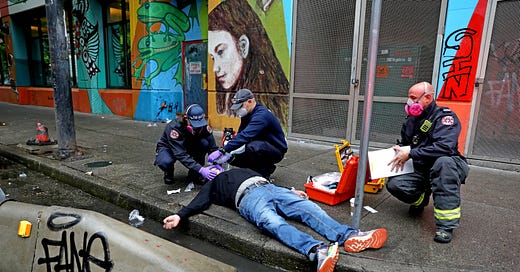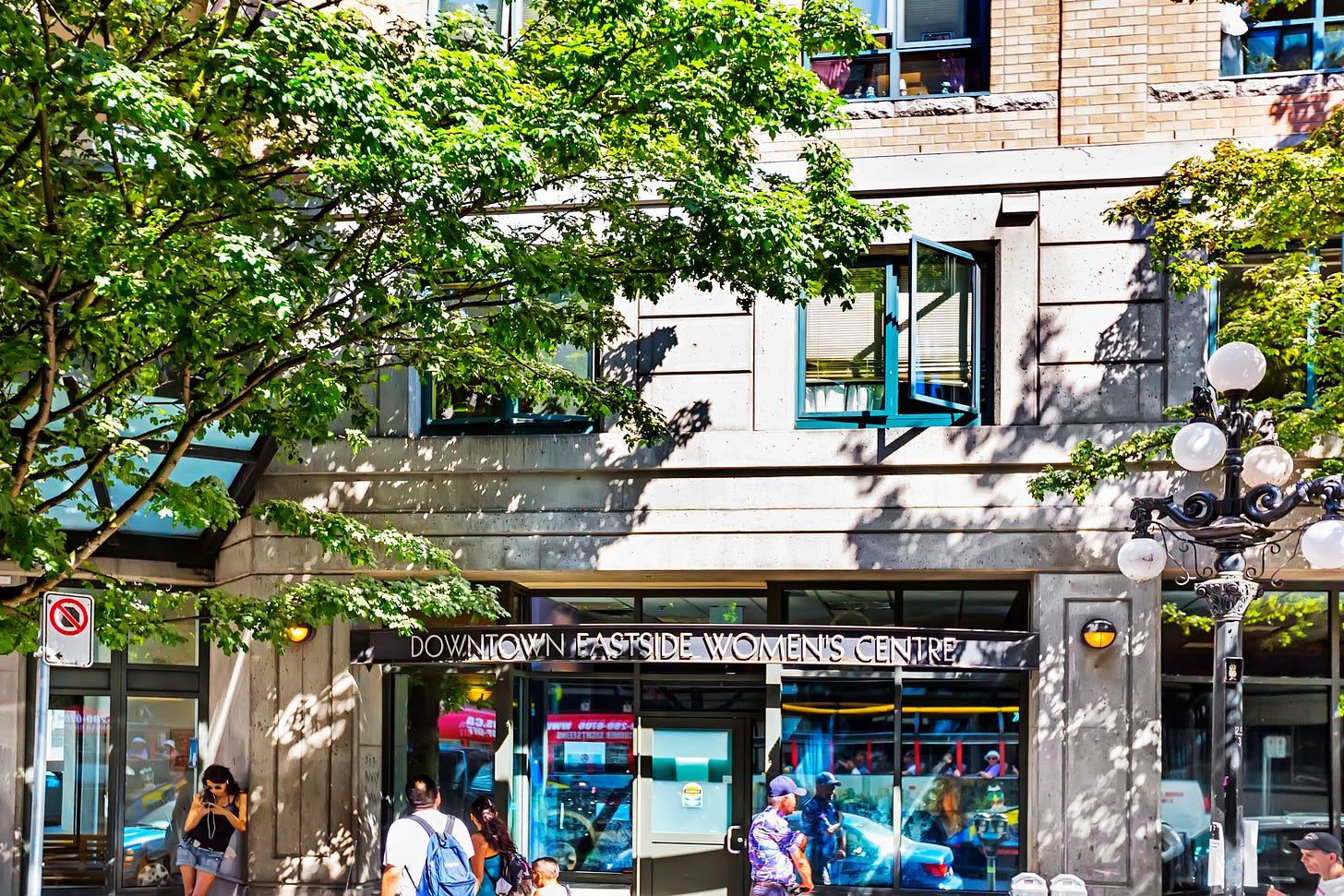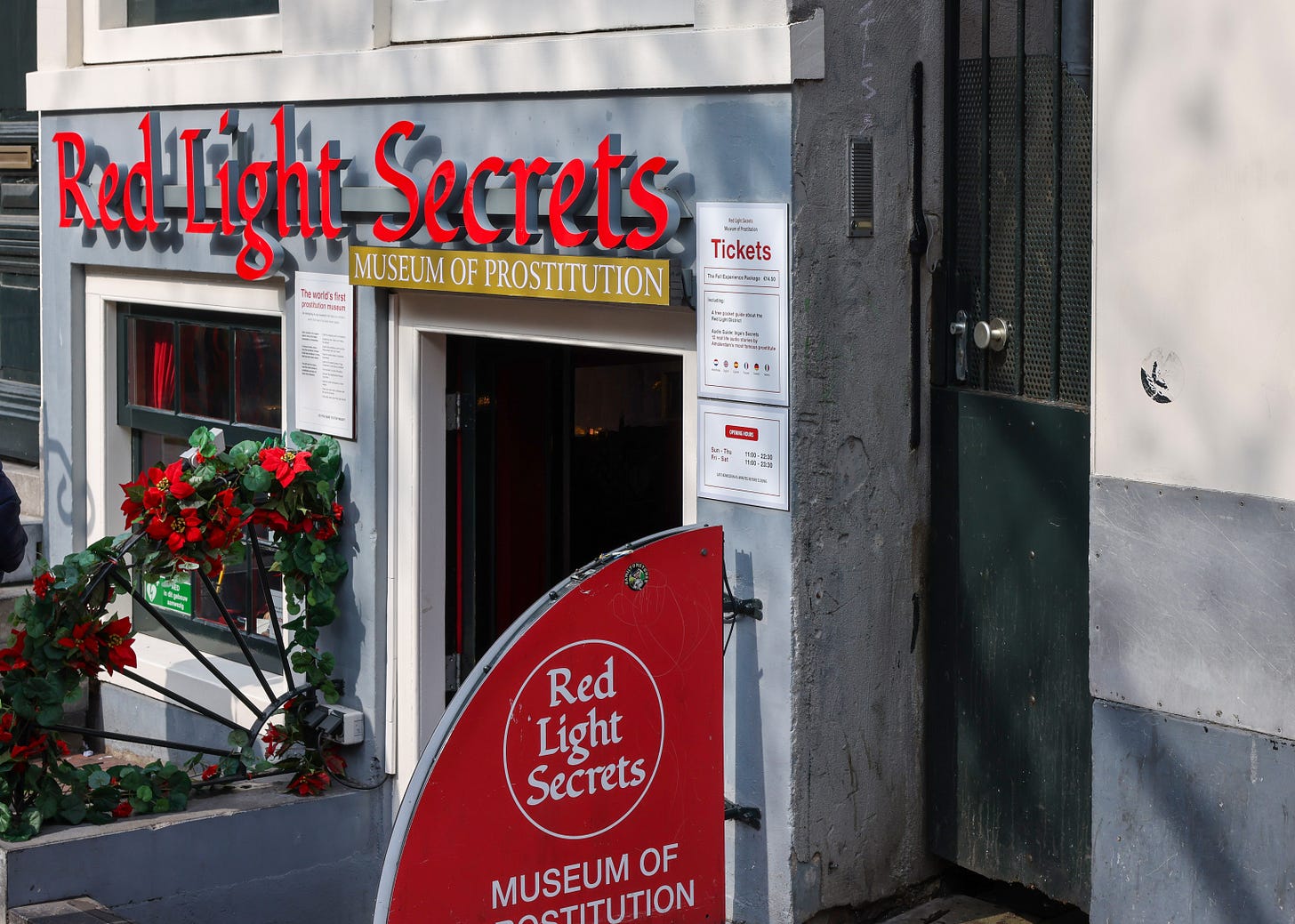Canadian Calcutta
Deaths from fentanyl are at an all time high, and still, the libertarian approach, that has proved to be a disaster, continues. Drug addicted women caught up in the sex trade suffer the most
Less than ten meters from Insite, the ‘safe’ legal injection site, that many intravenous drug users ignore
I am in Vancouver to meet with feminist activists against male violence, including those campaigning for an end to Canada’s sex trade. Prostitution markets expanded under Former Prime Minister Trudeau’s watch. In the name of ‘freedom and choice for women’, his party’s policies support the blanket decriminalisation of pimping, brothel-keeping and sex-buying – and have done nothing to stem the violence and abuse faced by the mainly indigenous women caught up in the sex trade.
Trudeau also supported the legalisation of Class C drugs such as fentanyl, heroin and crack cocaine; most prostituted women are hooked on at least one of these.
The Insite ‘safe injection’ clinic stands in place of any programmes to help women out of prostitution, or get them clean of the drugs that trap them within it.
Class A drug decriminalisation resulted in Vancouver becoming the fentanyl capital of the world, with the drug causing more deaths in British Columbia than homicides, suicides, accidents and natural causes combined. The death rate from fentanyl is three times the national average, and in the downtown Eastside, the rate is 30 times higher than it is in the rest of Canada. The Canadian epidemic results in more deaths than in neighbouring America, and many blame not just decriminalisation but a recent pilot project decriminalising the use in public of class C drugs – including heroin and cocaine. Since decriminalisation, drug use has exploded, including on family beaches, and even in maternity wards. Increasingly, children are experimenting with fentanyl; the debate about how to address addiction and drug peddling rages across Vancouver and nationwide.
What I discovered left me in no doubt that the Vancouver’s fentanyl free-for-all has significantly contributed to an increase in prostitution.
Insite is a free legal injection centre based in the Downtown East Side – Canada’s worst neighbourhood by far, also known as Canada’s Calcutta. The stark contrast between Vancouver’s waterfront, with its stunning views of mountains, ocean, and parks, and this impoverished district that looks and smells derelict is further accentuated by the beginnings of gentrification; an art gallery looks out onto urine-stained streets and homeless beggars. Members of the Insite team make available data on the number of ‘sex workers’ using the programme, but when I ask about resources designed to assist women off drugs and out of the sex trade, I’m told that staff take a ‘non-judgemental approach’ to prostitution and therefore, there are none. This came as no surprise.
At a support centre for women escaping sexual exploitation, I speak with Sandy, who asks me not to reveal either her real name or the name of the small charity she runs. ‘The pimps and the drug dealers are really dangerous,’ she tells me. ‘I've seen them run down the street chasing the people handing out free meals, because they believe they've been trying to get ‘their girls’ away from the life.’
Sandy explains to me how pimps, almost all of whom also deal drugs, prey on young, vulnerable girls (mostly from indigenous communities) and get them hooked on fentanyl. The sick twist is that this addiction is being enabled by public funding – and a hands-off approach by police. ‘Why pay for drugs from their own pockets,’ asks Sandy, ‘when there is perfectly free gear being handed out like candy at Insite?’
I put in requests to speak with someone linked to the drug services at Vancouver Coastal Health (VCH), and at the Vancouver Area Network of Drug Users (VANDU), which is a not-for-profit organisation and advocacy group. VANDU did not respond, but VCH eventually emailed back, saying that they (surprisingly) were unable to identify an expert to ‘speak to’ my enquiry and suggesting I contact an academic research unit on gender and sex equity. Given the high percentage of women both using drugs and involved in the sex trade, I had expected to find expertise amongst drug workers – but no.
When I meet a woman who was prostituted in the area a decade ago, and now works to help others escape the sex trade, I ask her whether this approach to drug use and addiction is helpful. For example, does it reduce the risk of HIV/Aids?
The ‘trans [male] inclusive’ women’s centre
‘They don’t offer exiting because it costs more money,’ she says. ‘We have to be discussing the social climate that allows AIDS to ferment in the prostitution community because there has to be an acknowledgement that the men are responsible. They’re the ones who are saying I’ll give you $50 more if I don’t use a condom, and women are saying ‘yes’ to that because of the dire situation they’re in, so until you change the social situation that women are living in and take away men’s ability to demand that, we’re just going to be going round in circles.’
Walking around, I see women almost in the Insite doorway, injecting heroin and smoking crack. One moves a few metres away with a crack-using punter, to another doorway where she appears to be giving him a hand job – presumably in exchange for drugs.
The only women’s centre in the entire area to be serving the drug-addicted women (almost all of whom are prostituted and pimped) is demanding that they acquiesce to the notion that ‘trans women are women’, and that anyone ‘identifying as a woman’ (whatever that means) is allowed in the centre. One woman, recently out of prostitution, tells me that it is just regular bearded, hulking blokes who go in to use the services, and of course this includes the pimps as well as some of the punters.
She also tells me that some pimps (those struggling financially) are coercing women to go in for a fix of fentanyl-type opiate even before they have become addicted; this is to get them addicted so that the pimps save money. There are no exit services, and nobody is willing to speak to me about anything other than harm reduction. Meanwhile, the prostitution population has grown, and violence has become more extreme – though all of this is anecdotal, because police refuse to look specifically at this particular population of vulnerable women.
This approach has also been tried in Europe. Take the Netherlands, for example, where the combination of drugs and prostitution is a major problem that has only been worsened by the legalisation of both.
De Wallen, Amsterdam
The Dutch legalised brothels in the belief that this would solve the myriad problems associated with the sex trade, by making it a job like any other. Supporters of legalisation claimed that criminals would drift away, once the women were liberated from the underworld. Yet since 2000, the legalised window brothels of De Wallen have attracted customers from all over the world. In 2007, Job Cohen, then mayor of Amsterdam, admitted that legalisation had failed. ‘We want in part to reverse it’, he told me at the time, ‘especially with regard to the exploitation of women in the sex trade. Lately we’ve received more and more signals that abuse still continues’. More recently, politicians, police, citizens – and the women in prostitution themselves – are also admitting that legalisation has been an abject failure. Contrary to government promises, trafficking into the Netherlands has massively increased, the street scene remains, and pimping and drug dealing are rife.
Unless Vancouver changes direction, and makes available real help to women, and men, who are desperate to escape the clutches of drugs and exploitation, its burgeoning reputation as Canada’s Calcutta will be cemented.








On the one hand, Canada's Left defends the sale of women's bodies as freedom. On the other hand, Canada's Left also supports Iran developing nuclear weapons so that it can spread a religious ideology that stones women for being accused of having an affair and forces them to drape themselves in black curtains when they appear in public, as well as lowering the age of marriage for girls to 9yrs. Canada's Left embraces 'queer' ideology while supporting societies and cultures that are openly murderous of LGBs (Iran loves trans ideology, BTW, because it's a way of avoiding having to murder gay kids).
What threads these paradoxical perspectives together is a simple idea: all women (including lesbians) belong to men who should have exclusive access to, and control over, them whenever they want. The promise of 72 virgins waiting for you in heaven if you kill a Jew tells you all you need to know about Islamist views of women.
Thanks Julie. You say the debate rages in Canada and yet here I am relying on your reporting. BTW, What is the actual dateline of this piece? Mention of Trudeau is confusing.